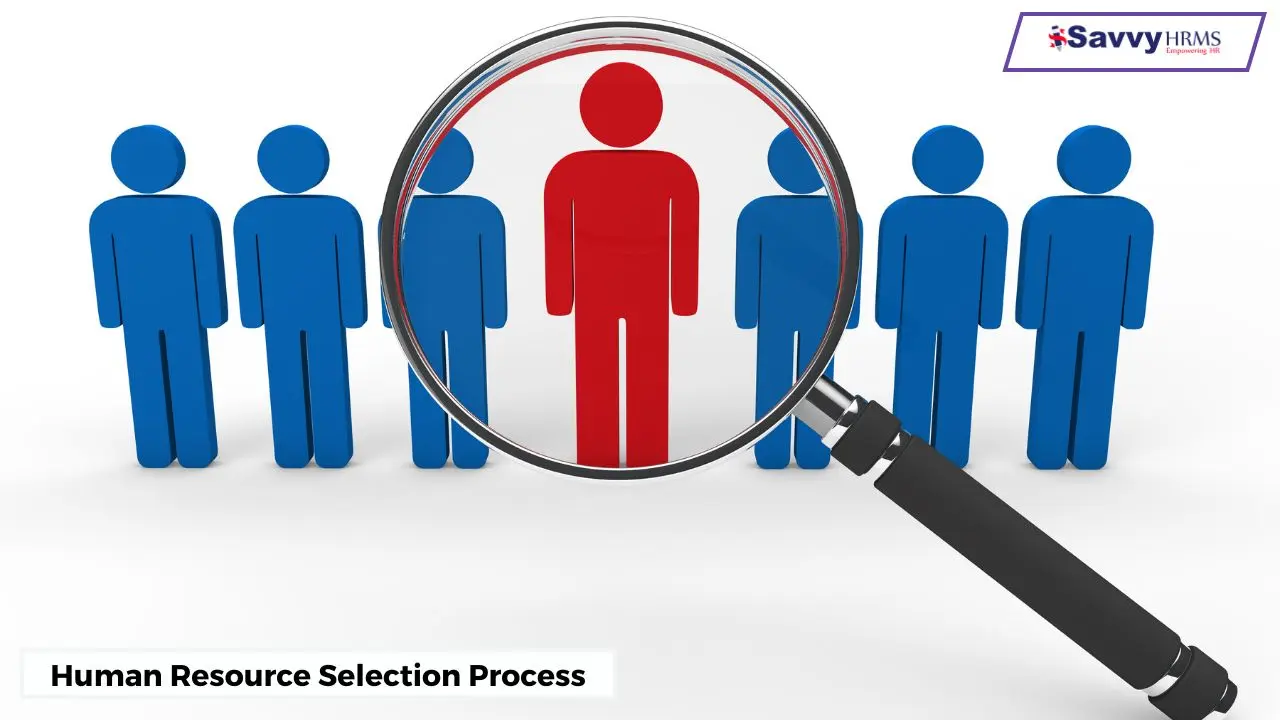The HRM system ensures that hiring occurs in time for the right candidates. The process appears to be straightforward. Therefore, understanding all its components can strengthen hiring processes. Within organizations and, in turn, improve performance levels in the recruitment & selection process.
What is the Recruitment & Selection Process?
To start, the Recruitment & Selection Process. It is the systematic steps Human Resource (HR) professionals take throughout the process of attracting, screening, selecting, and hiring candidates. The recruitment process helps fill job vacancies. As well as contribute to the sustained growth of the company.
Importance of the Process
What is the significance of the Recruitment & Selection Process in today’s work environment?
- To select the right candidates.
- In the second instance, it reduces costs and associated time regarding rehiring.
- Thirdly, it increases overall organizational productivity.
Due to the many advantages reported by organizations in the recruitment process.
Fundamental Steps in the Recruitment and Selection Process
Identifying the Need
During this phase, HR departments identify the job roles and associated responsibilities.
Developing the Job Description
Next, HR will prepare a detailed job description. Duties, skills, qualifications, and experience are required for both the employer and applicant.
Sourcing Candidates
The recruiter will begin sourcing candidates. Candidates can be sourced based on:
- Job portals
- Employee referrals
- Campus drives
- Social media
Resume Screening
With the sourcing phase completed. The HR recruiter will screen resumes and shortlist candidates. Based on their qualifications. This step is essential in helping to expedite the screening of applications. To eliminate unfit applications early within the Recruitment and Selection Process.
Interviewing Candidates
- Telephonic
- Video-based
- In-person
The interview format chosen helps to assess different skills. Such as communication, confidence, and cultural contribution.
Testing and Assessment
In some cases, employers choose to include a skills assessment. Aptitude test, or even a personality test, depending on the job roles, to ensure they have the best match.
Selecting a Candidate and an Offer Letter
Finally, the best candidate is selected and given a job offer.
Obstacles in the Recruitment Process
- Attracting top talent in hyper-competitive labour markets
- Unconscious bias in the decision-making process
- Diversity and inclusion
- Volume of applicant response
- Legalities and compliance
All of the above require HR Teams to be flexible and proactive.
The Impact of Technology
Technology has certainly changed the Recruitment & Selection Process. Having adopted Applicant Tracking Systems (ATS). To communicate more easily with candidates and to schedule interviews.
How to Improve the Recruitment Process
- Train Hiring Managers to conduct a Structured Interview
- Encourage Internal Hires
- Communicate with important updates as quickly and as transparently as possible
- Collect feedback
Employer Branding and Its Influence in Recruitment & Selection
That’s where employer branding becomes vital. Employer branding can impact the overall effectiveness.
When a company has a powerful brand, it is much easier to pull top-notch talent. Also, job seekers want to apply for positions with organizations that show job growth. Values and a respectable work culture.
- Posting employee testimonials on social media
- Emphasizing timely and respectful candidate communication
- Developing blogs and press releases that spotlight company awards and culture
- Ensuring successful candidate experiences during the selection process
Conclusion
In closing, the Recruitment & Selection Process is often seen. As an HR administrative with the recruitment process. However, this function touches the essential foundation for a successful team. And workplace culture. Candidate expectations, because creating great employees will allow. All organisations need to achieve the greatest success.
FAQs
- State the objective of both the defined characteristics.
To hire qualified candidates who fulfill the job description & fit the company culture.
- State the recruitment & Selection process. Are they both totally different?
Recruitment signifies the attractive portion. Selection signifies the filtering.
- Why is a job description so important during this process?
Job descriptions help provide clarity around job expectations and attract the right talent.
- How does technology make a difference in the recruitment function?
Technology automates tasks, saves time & improves efficiency. And offers the best possible experience for candidates throughout the process.
- Can small businesses benefit from a formal Recruitment & Selection process?
Absolutely! Just as much as larger entities.




